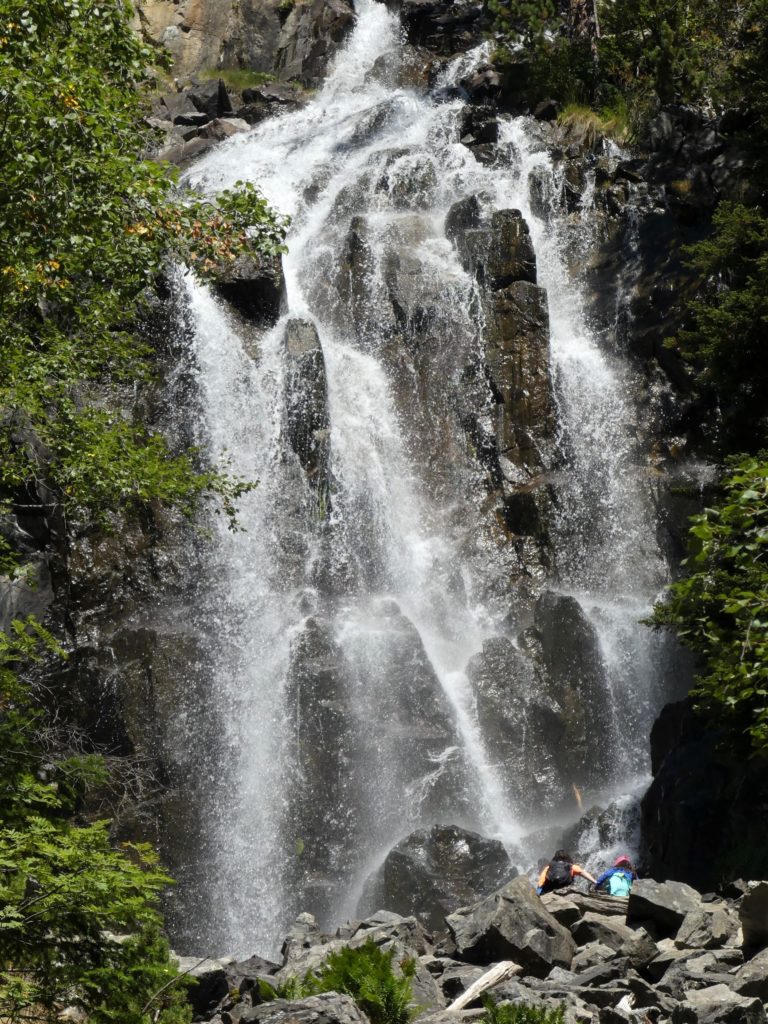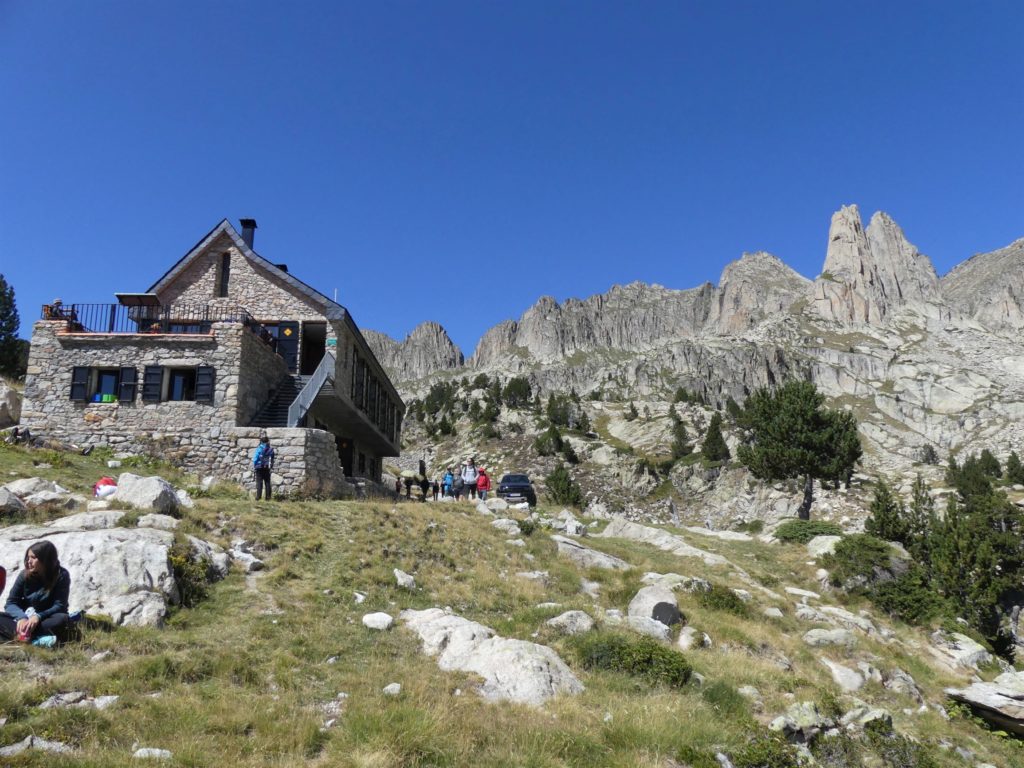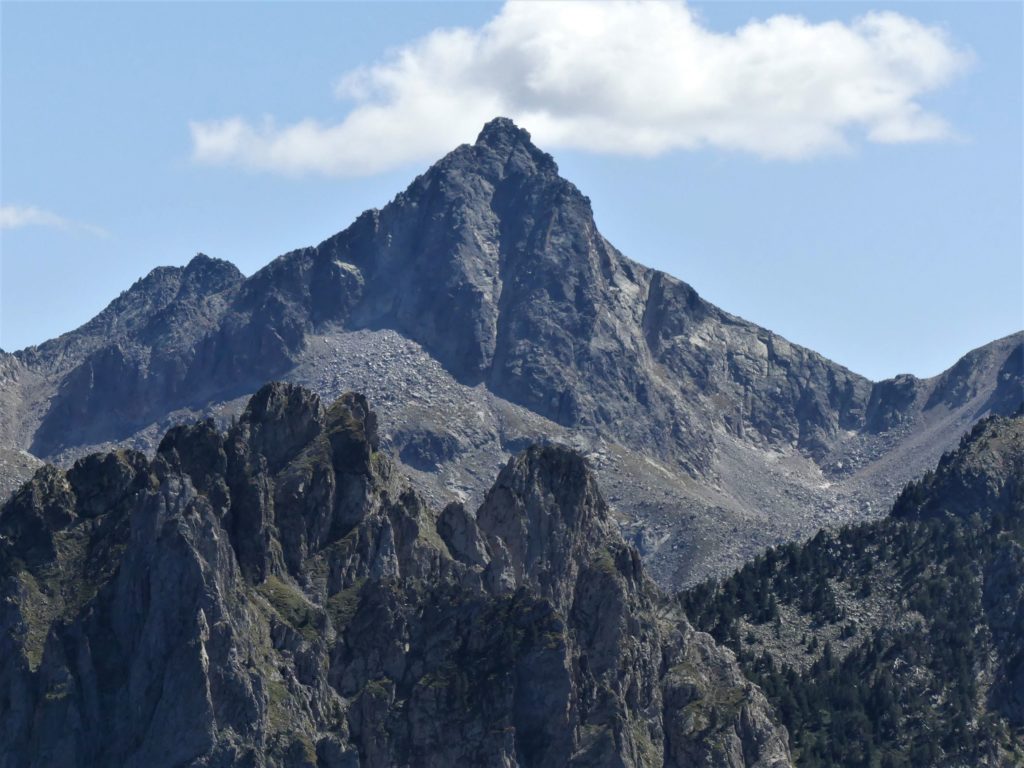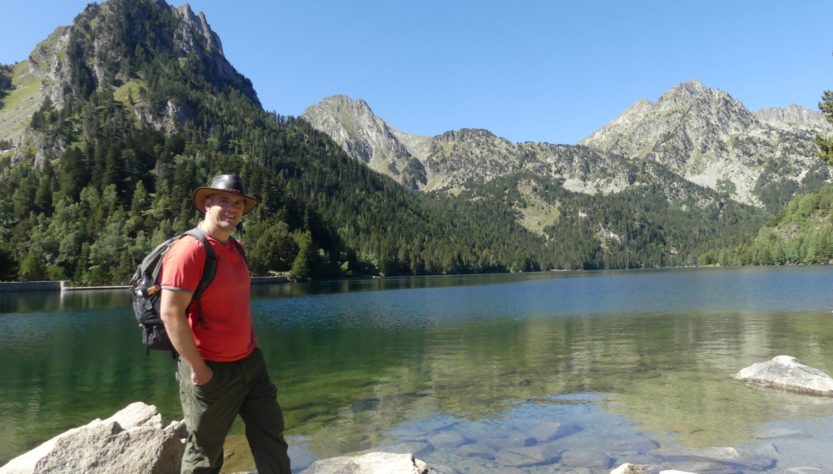We’d been driving across the barren and fairly monotonous central plain of Spain for two days. Heading north from Granada in Andalucia, we had stopped overnight in the interesting little town of Torija, a tiny place with a beautiful medieval castle just North of Madrid. Normally this would have been the ultimate sleepy village, but the night we passed through was the one time of the year when the village had its annual party, with an impersonator of Spanish singer Alejandro Sans and music till 4.30 in the morning. So, Gabi was justifiably knackered the next day. The largely unchanging burnt ochre scenery of the Spanish plateau in late summer wasn’t particularly stimulating either.

At Lleida, we turned North, on the final stretch towards the mountainous divide that cuts the Iberian Peninsula from the rest of continental Europe. Suddenly the Pyrenees began to work their magic. The ground began to rise steadily, towards the foothills pushing up along the horizon, and the landscape began to become greener, lusher. Mountains are truly givers of life! Great cliffs rose like a wall in front of us as we approached the already impressive outliers of the Pyrenees – the Sierra de Montsec, and soon we were following a magnificent twisting road through the deep canyons formed by the Noguera Pollaresa River. From the flatness and monotony of the plain, we were catapulted in a world of vertical orange-tinged cliffs, forests and rushing blue-green rivers. We had arrived in an entirely different 3-D, verdant Spain!

For about an hour and a half, we drove contorted roads through the mountains, finally climbing steeply to the tiny village of Espot, our base for visiting the Aigüestortes y Estany de Sant Maurici National Park. The park is one of two in the Spanish Pyrenees (the other being Ordesa y Monte Perdido in Aragon). I had wanted to visit this place for many years! The park is said to have some of the finest scenery and hiking in the entire range, plus an interesting history, having been created by General Franco in 1955 after he fell in love with the area’s wild beauty.

There are several campsites around Espot (along with plenty of small hotels), and we decided on Camping La Torre, set above town, with an expansive view of the valley, good hot showers and a small swimming pool. That night the mountain air was cold, probably close to freezing, but we pulled ourselves out of the tent early the next day, anxious to explore the National Park that lay just a few kilometres to the West. We drove to a parking area just outside the protected area (there are shared Taxis from Espot, for those without their own transport) and began our hike into the Park, up through a river valley densely forested with pine. The forest was so thick that glimpses of the mountains were fleeting, but when occasionally we crossed a lush alpine meadow or the trees opened out just a little, the magnificent mountains revealed themselves. At the head of the valley rose the twin peak of Els Encantats (2745m), a perfect pyramid when seen from lower in the valley. As you approach the Sant Maurice Lake, the twin summits that make this mountain so famous become more and more separated and apparent. After just over an hour hike, we emerged at the lake, or ‘Estany.’ This is one of the lakes that is actually dammed, but it is nevertheless spectacular with luminous crystal waters, brimming with fish and picture-postcard views. Mountains rise from all around, and deep forested valleys lead in all directions into the higher mountains.

We hiked around the lake’s northern edge, and up a steep but well-marked trail through the forest, emerging after about half an hour at the spectacular waterfall of the Cascada de Ratera. As much as the waterfall was amazing, the incredible vista down to the lake and the mountains across the valley was equally compelling. Continuing up, we emerged in an area where the forest began to thin, being replaced by beautiful Alpine Meadows and wetlands. Here we came to the Estany de Ratera, an enchanting lake, totally natural in origin. From here we walked onward and upwards, into a world of rocky peaks and boulders to arrive and the spectacular Refugi d’Amitges- a comfortable mountain refuge, backed by the sheer peak of Agulles d’Amitges and the more bulky mountains of Bassiero and Tuc de Saboredo.


This was an awesome spot for lunch, with views of three more mountain lakes cradled in the steep valleys around us and an eagle’s eye perspective of the whole San Maurice watershed. Lunch finished and feeling newly energized we descended back into the valley, taking a different trail, South of the Estany Sant Maurice, via a spectacular viewpoint of the lake and Els Encantats. After a full day of walking we arrived back at our car, tired but satisfied, and completely captivated by these mountains. Franco may have been a monster, but by creating this park at least he did one thing right!

The next day we spent chillin’ and exploring the valley of the Noguera Pollaresa river. We also got to see the impacts of climate change on the Pyrenees, a region that also seemed pristine and at one with nature. After a long dry summer, some of the protected area’s ‘permanent lakes’ had entirely dried out, including the Estany de Monestero. The rainless summer had dried out much of the Alpine vegetation. As we drove north of Espot we watched as a huge fire scorched a mountain ridge to the East of the protected area. Huge plumes of black smoke billowed into the air, and the bright orange flames were clearly visible from several kilometres away. Firefighting crews using helicopters were soon trying to douse the blaze with water flown up from a lake in the valley, but as we drove south again, the fire was still raging.

Despite the large number of dams on its route, the Noguera Pollaresa river has some of Spain’s finest white-water rafting, kayaking and water sports, with the villages of Sort and Llavorsi being hubs for aquatic adventure seekers. Early in the spring the river can offer challenging rafting up to grade 4. In the autumn it’s more like a grade 2-3 river, enough to have a fun splashing, but not very challenging. I love rafting, but decided to skip this time, and save for another day, when the white water would be more intense! Nevertheless, the river is spectacularly beautiful and I would recommend a float along the valley at any time of the year. Seeing a place, paddling along through the forest and the shimmering waters brings a new dimension to exploration anywhere. Just before Sort we decided to have a picnic by the river and pulled over in a layby. It was a beautiful, warm, sunny afternoon, ideal to quietly take in sights and sounds of nature. I watched how the water played in front of my eyes, re-organising ideas in fluid shapes and whirls. I find rivers utterly entrancing! I couldn’t resist it anymore, there was nothing for it. I watched a local lady lower herself into the crystal water. I had to get in for a swim. I got down on the river bank and waded through the shallows to the edge of a whirlpool, and a blue-green deep section in the river. The water was cold on my legs, but not freezing. I dived in and was taken by the strong but magnificent current, washed downstream, before bursting back to the surface. The ultimate in refreshing dips! After a few minutes I got out, feeling hyped and alive. The local woman was watching me and simply said ‘Tu eres nuevo, eh!’ You are like new. She couldn’t have been more right!



Great read Steve…i love rafting too….when we off to Nepal for some big water??!! ( Nepal-where i saw my tiger !! lol )
Hey mate, glade you liked the article! Although I’ve seen Jaguars, Lions, Cheetahs, Leopards and Puma’s in the wild, a wild Tiger sighting is still part of my dreams…Your spotted your tiger in Royal Bardia National Park, Nepal, correct? Load of love mate!
Steve